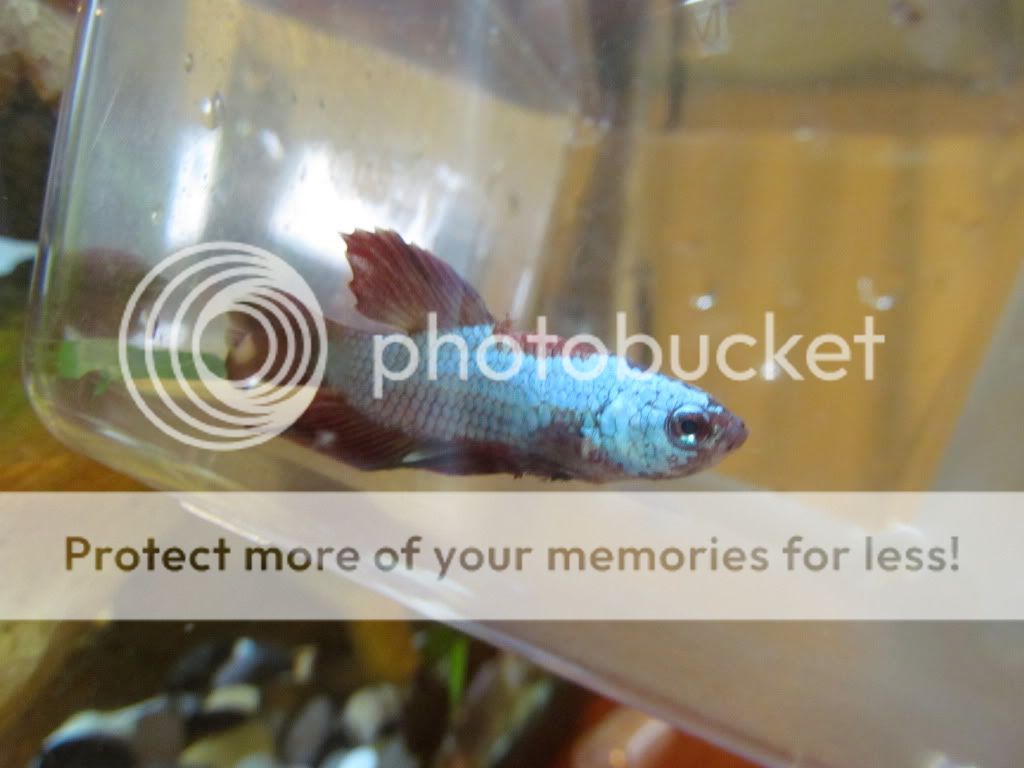I came upstairs about ten minutes ago and peeked at my bettas who were both happily swimming around their tanks.
Just a moment ago I turned around to look at my new guy (as he's so pretty!) only to not see him anywhere. I got up and looked closer in his tank...he somehow got himself wedged in a teeny hole in a terra cotta pot that is in the tank! I don't know how he did it...but I was able to gently help him out, but in his struggle to extract himself from the hole, he tore some scales off his back by his dorsal fin and on his side around his belly.
What can I do to help him out? I've never had a betta get stuck in one of those...I'm panicking a bit, I admit it. Will he be ok?
Here are some pictures of what he looked like earlier today...and what he looks like now for comparison. Both pots have been removed from the tank, and he is in a tub of water hanging on the side of the aquarium until I know what to do with him.



What he looked like prior:

Just a moment ago I turned around to look at my new guy (as he's so pretty!) only to not see him anywhere. I got up and looked closer in his tank...he somehow got himself wedged in a teeny hole in a terra cotta pot that is in the tank! I don't know how he did it...but I was able to gently help him out, but in his struggle to extract himself from the hole, he tore some scales off his back by his dorsal fin and on his side around his belly.
What can I do to help him out? I've never had a betta get stuck in one of those...I'm panicking a bit, I admit it. Will he be ok?
Here are some pictures of what he looked like earlier today...and what he looks like now for comparison. Both pots have been removed from the tank, and he is in a tub of water hanging on the side of the aquarium until I know what to do with him.



What he looked like prior:




 But I always do frequent water changes and my guys do well.
But I always do frequent water changes and my guys do well.